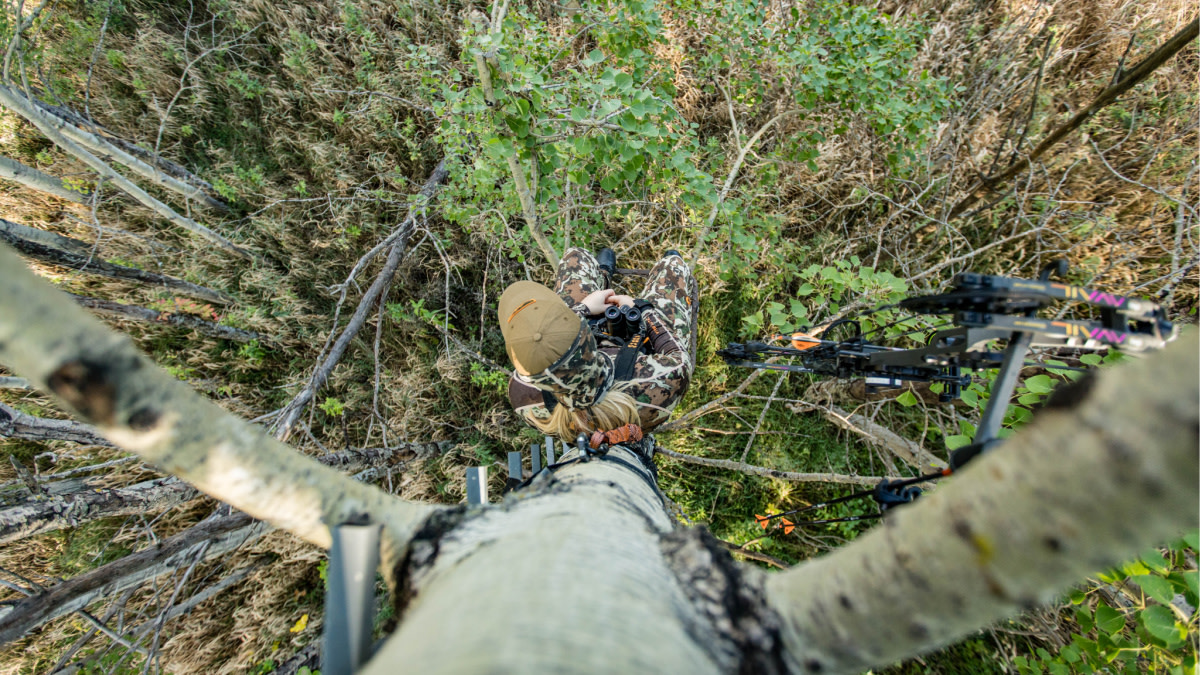
Early November is the absolute best time to arrow a big whitetail buck. The rut causes deer to totally lose their minds and make mistakes they otherwise wouldn’t. The second easiest time of year to shoot a booner? Early September—but for way different reasons.
Don’t Wait for “Good” Weather
To kill a big buck two months before the rut, you’ll need to rethink what you know about whitetails. For starters, weather plays an entirely different role.
During November, the colder it is, the better. During September, cold fronts don’t carry the same weight. Sure, they are nice to hunt and will get some deer moving, but they will also get more hunters in the woods. What’s worse is that the deer are going to move anyway this time of year, regardless of the temperature.
Too many early-season hunters think they need to wait for a front that ushers in cool weather to get bucks on their feet. But that’s simply not the case. Those bucks are feeding all summer long in scorching temperatures, and they’ll keep doing it throughout early fall.
That doesn’t mean they will go out and do wind sprints in 100-degree blazing sun. They’ll just pick the shady side of the beanfield to kick off dinner or bed in grassy swales where they can catch a breeze and avoid mosquitoes. Whitetails are highly attuned to microclimates in their home territory, but also more tolerant of weather that we don’t typically associate with “good” deer hunting conditions.
Don’t Play It Safe
Another common belief among bowhunters is that it’s best to play it safe during early season and wait to get aggressive until late October. This works for the hunter who has a manicured farm to himself, but not for the average public land bowhunter.
“I’m not afforded the opportunity to play the waiting game on Pennsylvania public land,” said Clint Campbell, public land whitetailer and host of Truth From The Stand Podcast. “Instead, I try to capitalize on a deer exiting known summer buck bedding prior to the shift into fall patterns.”
Campbell says this aggressive strategy is low risk because the bucks are likely to relocate within a week or two of rifle opener anyway. If he bumps them, they are just going to do what they would do regardless of pressure, which allows him to be more cavalier than traditional deer hunting wisdom would recommend.
That has been my experience as well. There’s a tight window within the first week of the archery season when mature bucks sometimes slip up and follow their summer pattern. This can bring them into the destination food sources before legal shooting light ends. If not, the bucks start shifting to a more cautious, run-out-the-clock-in-cover attitude, which necessitates an eye toward staging areas instead of food sources.
So, if you’ve got a whole farm and one tag, waiting for the rut makes sense. But if you’re sharing land with everyone else, get aggressive now and hunt places most people won’t.
Spot-On Spot Hunting
Another mistake a lot of early-season hunters make is to focus on the entirety of a food source rather than the most likely location a buck will enter it. If you’re dealing with a half-acre food plot, this probably isn’t a big deal. When you’ve got 40 or 80 acres of soybeans or alfalfa to think about, it is. During the rut, any corner or trail might work, given the fact that bucks will cover much more ground looking for does.
In September, they might hit the groceries and stay in a spot the size of a tennis court because they don’t need to go anywhere else. They’ve got food, and presumably, feel that the wind is in their favor. In other words, if you’re not there, you’re stuck watching and waiting.
A better bet is to use observation and trail cameras to find exactly where target bucks are entering the food. Pay attention to wind direction when they are using certain trails. Doing this will tell you their most likely approach for specific conditions and how to set up ambush sites that play off their noses. This is key for killing on opening day (and really anytime in September or October).
If you know where deer consistently enter a field, you can piece together their staging areas. This means that as fall progresses, you can start from that spot and work your way back into thicker cover. If they’re no longer moving in the beans in daylight, that just means they’re moving somewhere else. You can find that spot through early season scouting and the ability to hang and hunt.
Conclusion
The right plan and a willingness to ditch the November mindset can lead to a short, successful season. You just need to forget about “good” weather, playing it too safe, and generalizing food sources. Do those things and you’ll be surprised at how easy it can be to tag out six weeks before your competition starts getting serious about stand time.
Feature image via Captured Creative.




